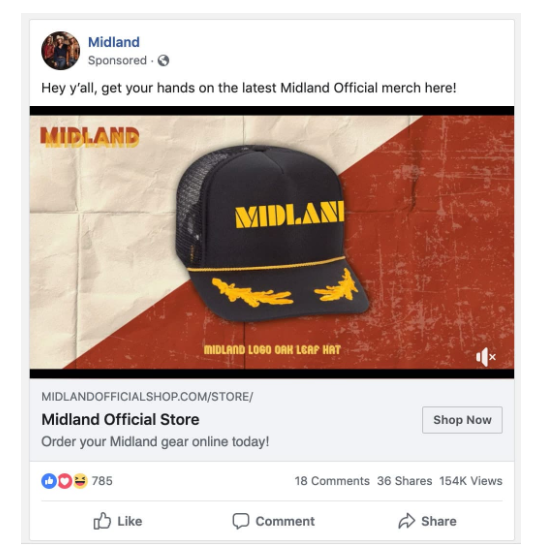
Did you know that Facebook offers discounts to smart advertisers?
Before you go checking your email for a digital coupon for 20% off, we need to explain. You see, Facebook discounts are based on how you manage ad relevance. That’s because Facebook aims to keep users happy AND deliver as many ads as possible.
“If you want to pay less and get better results, it’s time to prioritize relevance.”
When you run an ad on Facebook, the ad relevance diagnostics reporting will show you the ad’s scoring in three areas (you’ll see this along with other stats in the performance view—ad set level—if you’re using Facebook Business).
You’ll want to make sure you understand and master the following rankings:
Quality Ranking:
This ranking is somewhat ambiguous as it invovles your ad’s perceived quality compared to ads competing for the same audience. Ad’s are ranked on variables such as feedback from people viewing or hiding the ad, as well as low-quality attributes in the ad (such as images with too much text, withholding information, hyperbole and engagement bait).
Engagement Rate Ranking
This ranking shows how your ad’s expected engagement rate compares to ads competing for the same audience. The engagement rate calculates the likelihood that a person will click, react to, comment on, share or expand an ad. Engagement-baiting—asking for likes, comments, etc.—won’t improve your ad’s performance. Instead, focus on creating ads that people want to comment on and share.
Conversion Rate Ranking
Witih this ranking, you’ll see how your ad’s expected conversion rate compares to ads with the same goal competing for the same audience. The expected conversion rate calculates the likelihood that a person who viewed your ad will complete your desired action (sales conversions, etc.). In the ad below, for example, the Midland Band ad is optimized to get folks to visit their website and buy their official merchandise.

Image Source: Facebook
According to marketing guru, Tracy Hoeft, your ads should be above average in each of the three ranking categories above. “If you plan your ad content and audience targeting thoughtfully, you’ll get that discount,” he exclaims.
To help you out, here are 5 strategies to make your Facebook ads more relevant:
1. Target the Right Audience
“Success with Facebook ads starts with targeting the right audience,” says Tracy Hoeft. “The tighter the audience, and the more specific your content matches the interests of the people in that audience, the better.”
If you’re running an ad about a violin, start by targeting keyboard players. But you don’t have to stop there.
If the particular keyboard instrument you’re advertising would be more appealing to a specific age demographic or subgroup of keyboard players, come up with ways to narrow your audience to those players.
2. Give Users What They Need/Want
Yes, you can run an ad that’s a typical sales pitch. But wouldn’t it be better to create content that helps people pick the best product for their needs?
Whether you’re selling guitars or pianos, give your audience something useful, such as explaining the difference between your instruments and similar ones on the market.
As Buffer points out, “The key to growing your following and engagement on social media is to create content that your audience craves.” Six ways of discovering that content include:
- Using analytics
- Asking your audience
- Learning from industry peers
- Using Buzzsumo
- Creating marketing personas
- Following trends
3. Be Clear About Your Offering
Okay, so you’re targeting the right audience and giving them the content they want…or are you? If you’re not telling your Facebook tribe why your product is right for them, you’re missing the mark.
For example, if you’re product is a guitar, you need to make sure that your ad tells them why it’s the right guitar for them. “What problems are you solving for them?” How will their playing or performance be improved?” asks Tracy Hoeft.
You must make sure this is very clear to your intended audience. On that note, check out the ad below. As you can see, the brand is very straightforward about what it’s offering and why people should try them out.

Image Source: Live & Teach Guitar
4. Encourage Engagement
As mentioned previously, one of the key indicators that your Facebook ad’s are relevant is that people engage with them.
To achieve this, you need to come up with creative ways to develops ads that actually encourage engagement in a specific way. For instance, you can show two products and ask your audience which one they prefer.
Alternatively, you could ask what people think of the product’s color or how they’d use the product. In the ad below, the company asks an irresistible question that generated lots of engagement.

Image Source: Google
5. Stay Fresh
“Even the right ad served to the right person can get stale if you run it too long,” warns Tracy Hoeft.
Ad fatigue is real. If you get annoyed when you see the same branded advertisement over and over for months on end, you must realize that consumers are going to feel the same way. Plus, you have to think about what Facebook wants.
While most credible sources recommend that you refresh your creatives every 4-6 weeks, if you’re advertising on Facebook you need to change your creative weekly.
When you regularly refresh your creatives, you won’t have to worry about Facebook deciding NOT to display your ads to your target audiences altogether.
Final Thoughts…
Whether you’re a music store or a arts & crafts retailer, everyone could use a break when it comes to paying for Facebook ads.
Well, with some smart planning and consistent management, you CAN reduce the cost of your ads and make your ad budget go further. Plus, people will appreciate you more for putting in the time and effort to meet their needs.

